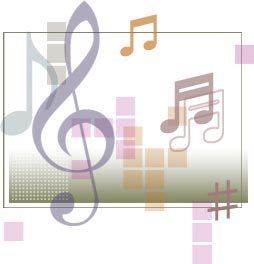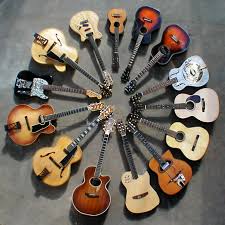
Happy Halloween!
In celebration of the holiday, GLC wanted to examine some absolutely HORROR-iffic bad guitar habits that will transform your potential to be the next Jimmy Page into nothing more than a Guitar Hero high scorer.
FADE IN:
LITTLE JIMMY practices his guitar. The instrument is beautiful. Something that has been preserved with great care, beautiful, if you could smell it you would still catch a sniff of that “brand new” smell.
However, there is something wrong. Little Jimmy is playing the instrument with his left hand (the one that presses down on the strings) with a thumb that rests high on the back of the guitar neck. Everyone should know that poor thumb positioning hinders hand and finger mobility. Perhaps this is a horror story after all.
BAD HABIT #1: Watch that thumb positioning on the left hand. The thumb should be positioned low on the back of the neck in order to maximize finger mobility.
INT — BEDROOM – NIGHT
Little Jimmy surfs the Web for a helpful guitar tab that will show him how to play the song “Scar Tissue” by the Red Hot Chili Peppers.
He loves the song and has always wanted to play. Little did he know, focusing too much on guitar tabs and learning to play sections of your favorite songs will only create a monster.
BAD HABIT #2: While guitar tabs are a very sweet alternative to learning sheet music, too many novice guitarists turn to tabs too quickly. Rather, learn the fundamentals and basics FIRST and then slowly progress to that Lynard Skynard “Free Bird” solo.
EXT – PARK – DAY
Little Jimmy is outside, enjoying the wonderful day with his girlfriend. He has not picked up the guitar in a few days but hey, creativity arrives in stretches. There is always tomorrow, right?
BAD HABIT #3: If you realistically want to become a “guitarist” you must practice every day. No, you do not need to put in several hours but a consistent and regular schedule will ONLY ensure progression. Without it, you’ll never become a skilled musician. Try 15 to 30 minutes a day.
INT – BEDROOM – NIGHT
Little Jimmy’s girlfriend broke up with the future rock star. Now, he has nothing better to do than practice guitar. That, and prove his ex wrong once he finally makes it.
The only problem is his posture is absolutely horrendous. Dismissing any common sense, Little Jimmy wants to play the guitar with the neck facing down (to change the “culture”), ignores the guitar strap, does not sit up straight and refuses to cut his fingernails.
BAD HABBIT #4: Oh, so simple. Correct posture is required for beginner guitarists just as much as it’s required in a business class. The guitar is your business and you must treat it right. Sit up straight, cut your nails, hold the pick right and for God-sakes – point the guitar UP when playing.
EXT – BURGER KING – DAY
Our story has come to an unfortunate conclusion. Little Jimmy tried to learn the guitar with one too many bad habits. Some say that the tragedy of it all is that Little Jimmy could have become an accomplished musician had he spent a little more time here, a little more time there.
Regardless it was out of tune and ended on a sour note. Little Jimmy’s future was destine for a Manager at Burger King.
BAD HABBIT #5: While the simplest of them all; playing the guitar out-of-tune is a train wreck waiting to happen. Music is all about precision and hitting the right note, at the right time. How can you possibly achieve that feat when your guitar is out of tune? Fess up the money for a solid guitar tuner and tune that puppy EVERY time you play. What are you lazy!?





